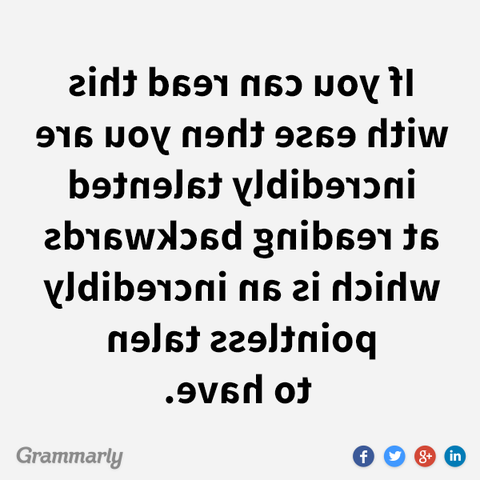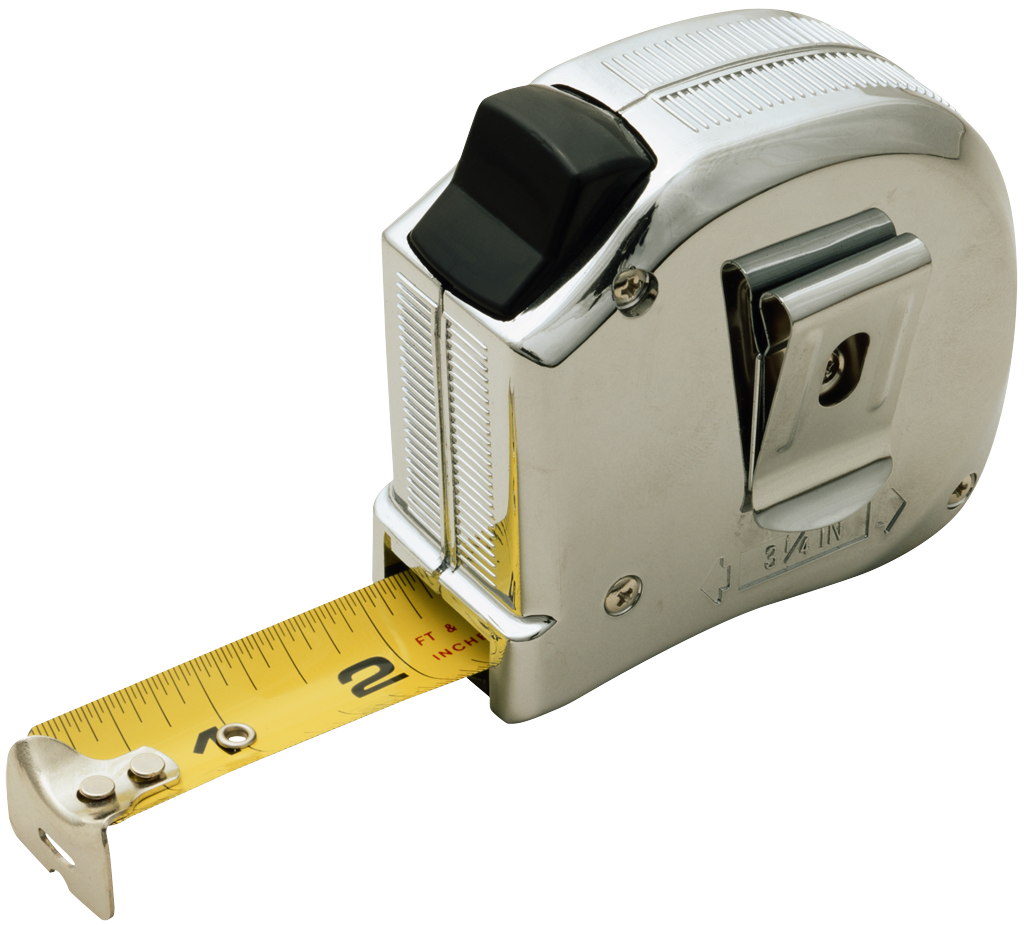Entries from July 2014 ↓
July 30th, 2014 — Just for fun
…especially the last line
If there’s one thing I love about Facebook it’s the images and pictures people share.
A recent one that caught my eye is this:

Not only is it interesting in the fact that you can test yourself as to whether you can read text backwards or not (which, incidentally, I can), but it’s also a howling blooper.
Have you spotted it?
Penultimate line – the ‘t’ is missing from ‘talent’.
Ooops.
What’s your favourite Facebook share? Paste it in the comments section below so we can all enjoy it.
July 23rd, 2014 — Branding, Customer service, small business web marketing, social media, social media marketing
The Power of the Human Brand
Have you noticed the “them and us” of business?
Whether it is networking, general chit-chat or trade fairs, the “big boys” make all the noise whilst looking down their noses at the small businesses.
Just because they’re bigger than you doesn’t mean they’re better. To be honest, they’re way worse than you.
How do I know that?
Because you have the benefit of a human brand.
What is a human brand?
Large corporations have oodles of cash to chuck at their market place. They can afford the biggest marketing campaigns, sign up celebrities and bankroll peak time TV advertising.
You can’t do that, but you can do something else.
Being a small business, you have the ability to reach out and touch your audience. Not in a creepy way, but in a way that leads to trusting relationships. Your customers can get to know you – the face behind the brand. That’s something that doesn’t happen with large corporations.
That’s why it’s important to make the most of your human brand.
If you have staff, it’s also important to make sure they’re involved with the business and share your passion. Investing in them will turn them into brand advocates, so when customers interact with them, they’ll receive the kind of personal service they want.
Making the most of your human brand is essential, but there are also a few other ways you can out do the big boys.
Passion
The chances are, because you started up your business, you love what you do (otherwise you wouldn’t be doing it). That passion is infectious and will shine through in every interaction you have with your customers.
Large businesses don’t have that; they just have executives that are simply there for their fat pay check. Their main concern is that sales targets are hit and shareholders are kept happy. They have no emotional investment in the business.
Agility
If you’ve ever worked for a large company you’ll know how slowly they move.
There are so many levels of management and rigid procedures; any change in policy can take months or even years to happen.
For the small business change is easy. You have no red tape to dodge and no board of directors to appease. Decisions can be made quickly and changes implemented instantly helping you react to you market’s needs.
Service
There are only a few large companies out there that give exceptional service, the obvious ones being John Lewis and Apple (from my experience).
The people that work for large companies, especially at the lower end of the pay scale, are just there to do a job. They are unlikely to go out of their way to help you because it’s no skin off their nose if you go elsewhere. But when it’s your own business, every customer is like family. If they’re unhappy, you’re unhappy so you’ll do everything in your power to make sure they fall in love with your company and come back.
After all, even if you’re a little more expensive, they’ll happily pay a premium for excellent personal service.
Getting your human brand out there
To make an impact, your online presence has to be every bit as chatty and warm as the service your customers receive.
That means one thing – getting social.
Although you must have a stonking website that’s full of useful copy that tells the reader the benefits of dealing with you, it’s also important you have an active presence on social media.
Facebook, Twitter, Pinterest, LinkedIn etc., must be used regularly and actively. Don’t just use them as a soap box from which you can promote your business; talk to your customers, build relationships with them and give them useful information.
This openness is what will set you apart from other businesses. Be yourself; if your avatar is your logo, make sure you sign off your update with your name to let your customers know whom they’re talking to.
When you’re competing with big companies you’ll never be able to beat them on cost. That’s why it’s important you concentrate on the level of service you provide because that’s an area they’ll never be able to beat at.
Treat your customers and staff like family and you’ll build loyal, trusting relationships that last.
Author: Sally Ormond, Briar Copywriting
July 16th, 2014 — LinkedIn
LinkedIn is one of the most powerful business networking sites out there and yet it’s also one of the most underutilised.
According to recent research (as cited on Smart Insights) almost half of all profiles on the site are incomplete and only 58% of users update their details.
As a platform that’s constantly bringing out new features, it’s essential to keep on top of things to make sure you get the most from it.
Below is an infographic from Smart Insights that gives you 17 tips to make sure you’re making the most of your profile.

July 9th, 2014 — Google, Google +

There is only one thing that’s certain in internet marketing – that Google will constantly evolve.
Its latest change involves the removal of profile pictures and circle count from search results that include Google+ authorship.
The official line is that it leads to a “less cluttered” design, but many SEOs believe the move has been made by Google to protect its ad revenue.
How does that work?
Well, the addition of a profile image next to the natural listings makes them more noticeable than the paid results.
Once upon a time, the sponsored links (paid for advertising) were highlighted at the top of your search results page. Now they just have a yellow “Ad” next to them making them blend in with the other results.
The images that appeared with the organic results made them stand out too much, diverting attention from the sponsored links.
Is authorship still worth having?
I would say yes.
Granted, the addition of the profile picture against search results was definitely bonus, but I still want Google to know the sites that I write for on a regular basis.
I opened this blog by saying that the only thing certain about internet marketing was that Google’s always evolving. Well, there’s a chance that Google might bring in a future update that makes use of the authorship facility once more and I want to make sure I’m there when it happens.
The upshot of this latest update will probably be that fewer people sign up for authorship because the prominent visual incentive has been taken away.
But no one knows what’s going to happen in the future so I’m going to sit tight for now.
What are your thoughts?
Did you sign up for authorship?
Has it made a noticeable difference to you?
What do you make of this latest change?
Leave a comment below and let me know your thoughts.
July 2nd, 2014 — blogging, blogging for business, Content marketing, Content writer

You know you need content.
You know it must be genuine, interesting and relevant to your audience.
You know it takes time to create.
But do you know how long your blogs and articles should be?
If you do could you let me know?
There is no definitive right or wrong answer (there’s a surprise) and the decision about how long your article or post will be will depend on your subject matter and audience.
Short vs long
In the world of marketing, long copy has always out performed short. But does the same go for blogging?
If you opt for a long article you must make sure your message remains strong throughout, draws your reader in and keeps their attention and that it’s subject matter is relevant.
If you fail on any of these counts people won’t read your stuff.
But there is something else that should be added to that list and that’s the reader’s attention span.
Personally speaking, I prefer short posts and articles.
Why?
Simply because I get bored easily.
It’s rare for me to find a blog that’s over 600 words that I will actually read through from start to finish. I prefer my information in short, entertaining chunks that I can read quickly.
I guess that’s why most of my blog posts are short.
By my reckoning I can’t be the only person in the world that thinks this way, so what I write should appeal to a fairly large audience.
Long blogs attract more comments
Do they? Not sure, that’s just a guess.
Mind you, if you think about it, long articles probably do attract more comments.
If you’re writing 700+ words you can formulate arguments for or against a particular question. This kind of writing will evoke an emotional response in the reader – who will either be in your camp or behind enemy lines.
Therefore, if written well, your readers will be more inclined to comment and put their own viewpoint forward.
But if you write a short post that concentrates on a particular feature (so in my line it could be about website copywriting, email content, newsletters, SEO etc.), the reader will take that information away with them and use it and may be less inclined to comment (unless of course they disagree with you).
I guess what it comes down to is:
- Who is your audience?
- What do they want to know?
- What do you want to get out of your blogging?
A good idea to make sure you cover all bases is to mix up your posts – have some long, some short, infographics, videos etc., so you provide something for everyone.
It’s not enough just to churn out the same old, same old week after week. A bit of variety will keep your audience entertained and help attract a wide spectrum of readers.
Over to you
What are your thoughts on this?
Are you a long or short fan?
Leave a comment below.








